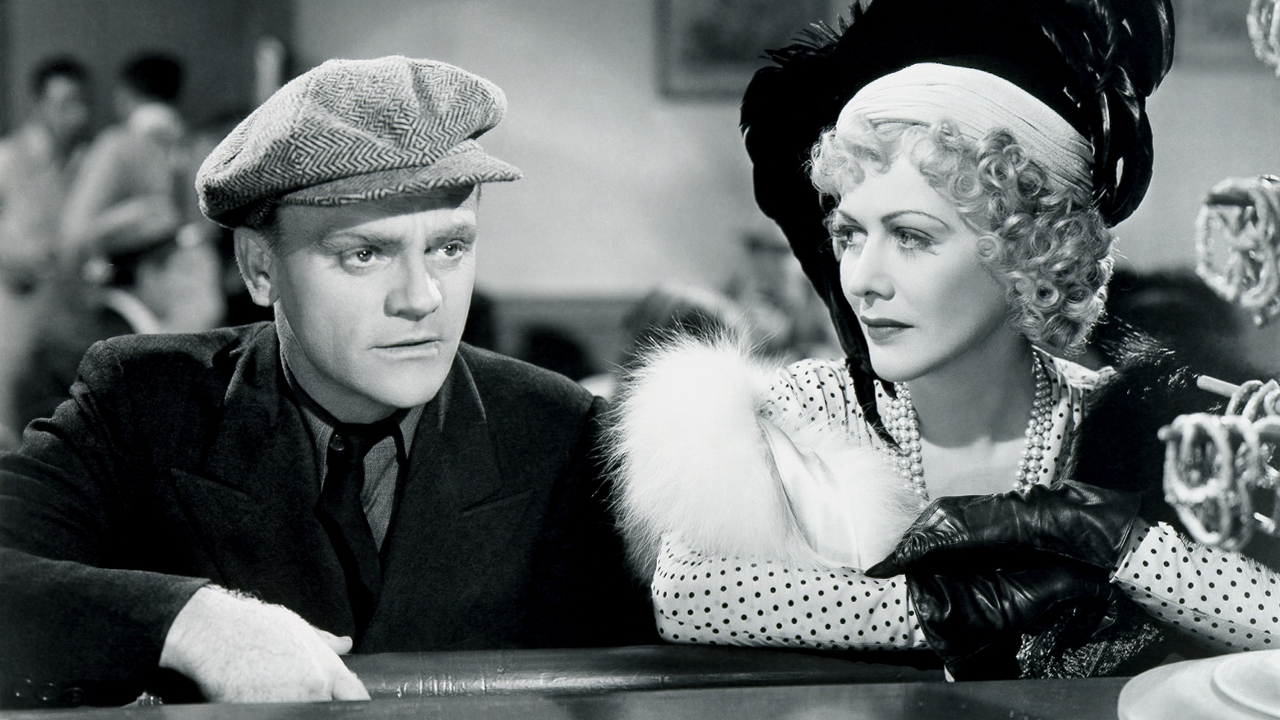 The Criterion Collection and Kino Lorber have both released 4K UHD restored versions of classic films that were produced by the legendary Hal Wallis.
The Criterion Collection and Kino Lorber have both released 4K UHD restored versions of classic films that were produced by the legendary Hal Wallis.
Raoul Walsh’s 1939 film The Roaring Twenties was made during Wallis’ tenure as chief of production at Warner Brothers, while John Sturges’ 1957 film Gunfight at the O.K. Corral was made during his tenure at Paramount.
It seems odd that Criterion, not Warner Home Video, would be the home video company to release The Roaring Twenties, one of Warner’s top hits of 1939, generally acknowledged as the greatest year in the history of the movies, or at least movies made during the reign of the Hollywood studios. Yet here we are almost twenty years into the Blu-ray era and Warner Home Video had not upgraded the film from its initial DVD release in January 2005 despite having long since released Little Caesar, Public Enemy and Scarface, and more recently Angels with Dirty Faces, the four films it has always been compared to, on Blu-ray.
Criterion has not only caught up with those other releases but has gone a step further in not only upgrading the film to Blu-ray, but 4K UHD, releasing both versions in the same set. Needless to say, the film has never looked or sounded better, though its relevancy may have dimmed somewhat in film historians’ eyes.
James Cagney, who starred in The Roaring Twenties, became a major star playing a gangster in William A. Wellman’s 1931 film The Public Enemy, joining Edward G. Robinson whose career received a similar boost with Meryn LeRoy’s Little Caesar earlier that year. Paul Muni would soon follow with Howard Hawks’ Scarface early the next year.
Those three films, which were popular with the public, would soon fall prey to the censors who forced Hollywood to tone down the violence in future gangster films. It wasn’t until Michael Curtiz’s 1938 film Angels with Dirty Faces that another gangster as evil as those played by Robinson, Cagney, and Muni scored big in the eyes of the public in the person of Humphrey Bogart whose name appeared below the title in the film starring Cagney as a gangster admired by the Dead End Kids and Pat O’Brien as his boyhood friend, now his priest. Bogart was an irredeemable baddie.
Bogart again stood out as an equally evil gangster in The Roaring Twenties where he was again billed below the title of the film which starred Cagney and Priscilla Lane. Nobody, however, refers to it as a Cagney/Lane film. It’s always referred to as Cagney/Bogart film. Although director Walsh and producer Wallis hated one another, they were both proponents of Bogart and instrumental in his rise to superstardom. He had his first major lead roles in 1940’s They Drive by Night and 1941’s High Sierra, produced by Wallis, and directed by Walsh. It was Wallis who later insisted on Bogart for the lead in Casablanca.
Aside from Cagney and Bogart, the best remembered performance from the film is that of Gladys George as the nightclub hostess who delivers the film’s immortal last line, “he used to be a tough guy.” Priscilla Lane as a singer and Jeffrey Lynn as an Assistant District Attorney are good but not as memorable.
Also of note is Ernest Haller’s exemplary cinematography, the same year that he won an Oscar for Gone with the Wind.
Despite the film’s huge success, Cagney refused to play another gangster role, relenting just once ten years later when he played one for Warner Bros. and Walsh again in White Heat.
Wallis abruptly left Warner Bros. when Jack Warner literally pushed him out of the way to grab the Best Picture Oscar for Casablanca, a film Warner had nothing to do with.
Wallis’ career as a high-profile Hollywood producer continued without stop as he immediately signed a contract with Paramount where he made lots of money for the studio working with Martin & Lewis and Elvis Presley as well as high profile stars like Barbara Stanwyck, Burt Lancaster, and Kirk Douglas.
1957’s Gunfight at the O.K. Corral was not the first film about the legendary shootout between the Earps and the Clantons but is considered one of the best.
Allan Dwan’s 1939 film Frontier Marshall with Randolph Scott as Wyatt Earp, and John Ford’s 1946 film My Darling Clementine with Henry Fonda in the role, would precede it. At the time of its production, the Hugh O’Brian TV series The Adventures of Wyatt Earp was a huge success.
The Kino Lorber upgrade is superb. The cinematography by 18-time Oscar nominee Charles Lang is beautifully captured in all its famed light and shadow, emphasizing the gorgeous sets and costumes, highlighting those in red and green. Neither Lang nor 23-time Oscar-nominated Art Director Hal Perreira were Oscar nominated this time, but four-time Oscar-nominated editor Warren Low and five-time Oscar-nominated sound recorder George Dutton were.
Burt Lancaster, filming this between 1956’s The Rainmaker and 1957’s Sweet Smell of Success, and Kirk Douglas filming this between 1956’s Lust for Life and 1957’s Paths of Glory led the cast as Wyatt Earp and Doc Holliday. Ironically, this was the only 1957 film that was a success for either actor. The now long revered Sweet Smell of Success and Paths of Glory were flops in their initial releases.
The screenplay by Leon Uris (Battle Cry, Exodus) allows for standout work from all the film’s actors as directed by Sturges (Bad Day at Black Rock). Among them are Rhonda Fleming (A Connecticut Yankee in King Arthur’s Court), Jo Van Fleet (East of Eden), John Ireland (Red River), Earl Holliman (Giant), Dennis Hopper (Easy Rider), Lyle Bettger (The Greatest Show on Earth), Frank Faylen (It’s a Wonderful Life), Martin Milner (Sweet Smell of Success), and Olive Carey (The Searchers).
Happy viewing.



















Leave a Reply
You must be logged in to post a comment.